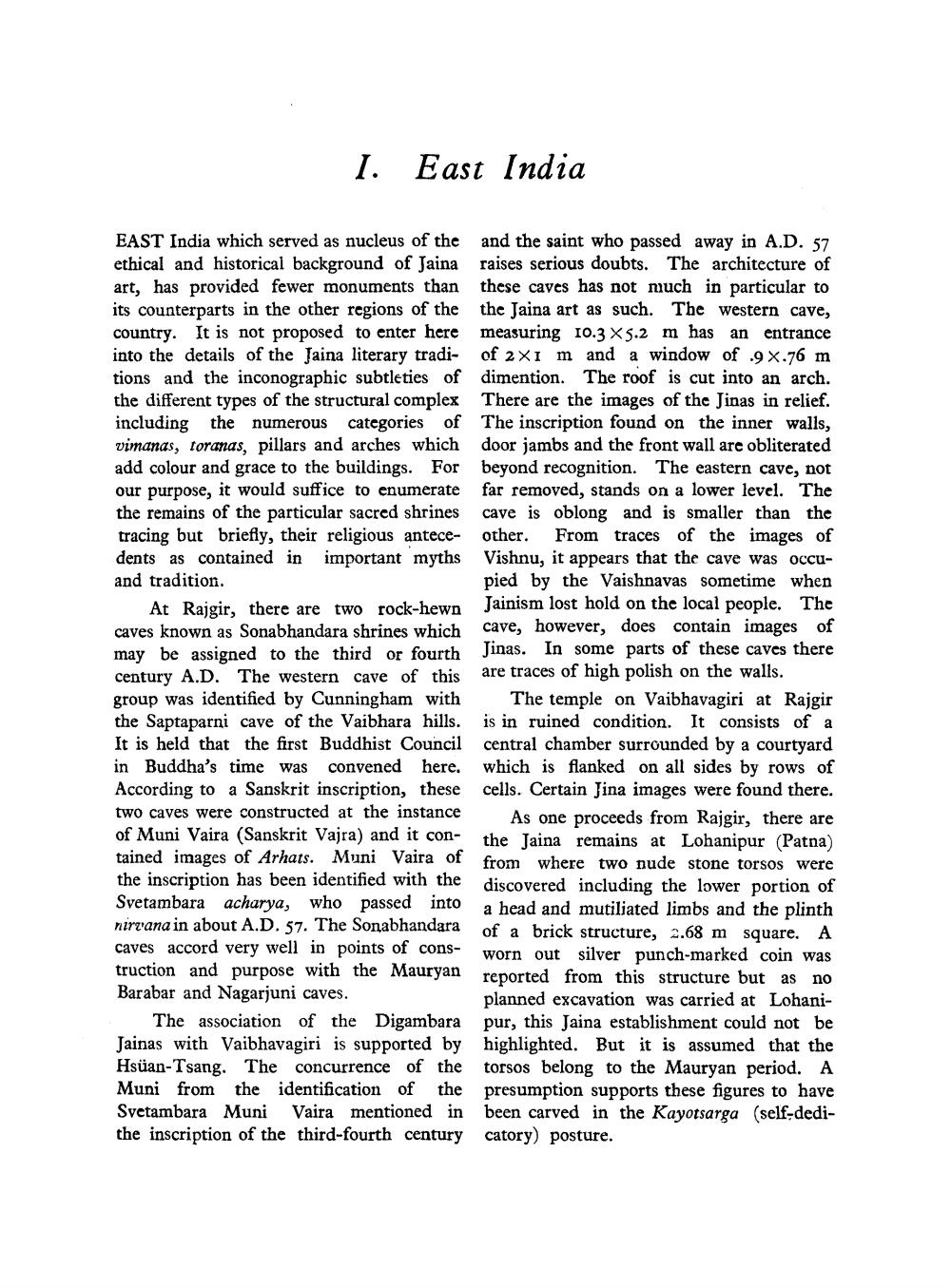________________
1. East India
EAST India which served as nucleus of the and the saint who passed away in A.D. 57 ethical and historical background of Jaina raises serious doubts. The architecture of art, has provided fewer monuments than these caves has not much in particular to its counterparts in the other regions of the the Jaina art as such. The western cave, country. It is not proposed to enter here measuring 10.3 X5.2 m has an entrance into the details of the Jaina literary tradi- of 2 Xi m and a window of .9 x.76 m tions and the inconographic subtleties of dimention. The roof is cut into an arch. the different types of the structural complex There are the images of the Jinas in relief. including the numerous categories of The inscription found on the inner walls, vimanas, toranas, pillars and arches which door jambs and the front wall are obliterated add colour and grace to the buildings. For beyond recognition. The eastern cave, not our purpose, it would suffice to enumerate far removed, stands on a lower level. The the remains of the particular sacred shrines cave is oblong and is smaller than the tracing but briefly, their religious antece- other. From traces of the images of dents as contained in important myths Vishnu, it appears that the cave was occuand tradition.
pied by the Vaishnavas sometime when At Rajgir, there are two rock-hewn Jainism lost hold on the local people. The caves known as Sonabhandara shrines which cave, however, does contain images of may be assigned to the third or fourth Jinas. In some parts of these caves there century A.D. The western cave of this are traces of high polish on the walls. group was identified by Cunningham with The temple on Vaibhavagiri at Rajgir the Saptaparni cave of the Vaibhara hills. is in ruined condition. It consists of a It is held that the first Buddhist Council central chamber surrounded by a courtyard in Buddha's time was convened here. which is flanked on all sides by rows of According to a Sanskrit inscription, these cells. Certain Jina images were found there. two caves were constructed at the instance As one proceeds from Rajgir, there are of Muni Vaira (Sanskrit Vajra) and it con- the Taina remains at Lohanipur (Patna) tained images of Arhats. Muni Vaira of from where two nude stone torsos were the inscription has been identified with the discovered including the lower portion of Svetambara acharya, who passed into a head and mutiliated limbs and the plinth nirvana in about A.D. 57. The Sonabhandara
of a brick structure, 2.68 m square. A caves accord very well in points of cons
worn out silver punch-marked coin was truction and purpose with the Mauryan
reported from this structure but as no Barabar and Nagarjuni caves.
planned excavation was carried at LohaniThe association of the Digambara pur, this Jaina establishment could not be Jainas with Vaibhavagiri is supported by highlighted. But it is assumed that the Hsüan-Tsang. The concurrence of the torsos belong to the Mauryan period. A Muni from the identification of the presumption supports these figures to have Svetambara Muni Vaira mentioned in been carved in the Kayotsarga (self-dedithe inscription of the third-fourth century catory) posture.




